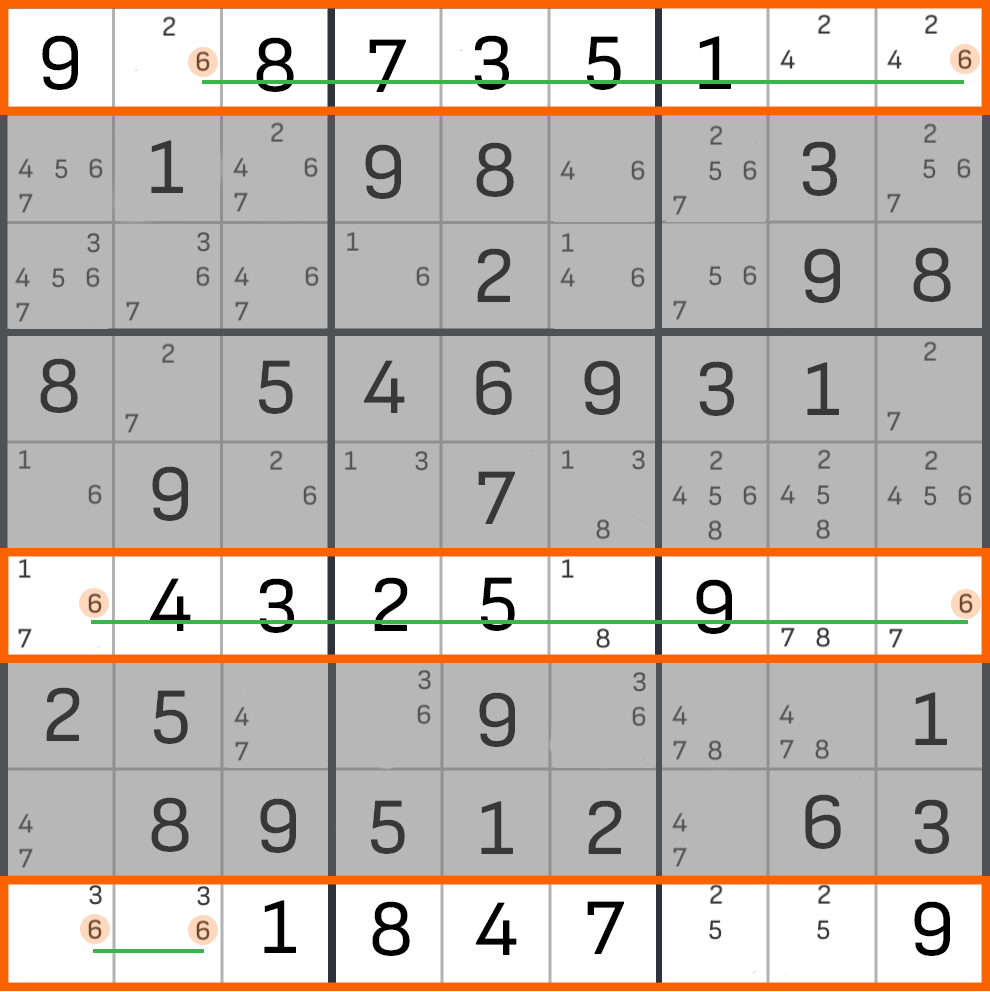The "Swordfish" technique is a great way to solve those tricky Sudoku puzzles with lots of empty cells. The technique helps us rule out numbers that might be a good fit and makes the selection process more streamlined. In mechanics, the "Swordfish" is comparable to the "X-Wing," but it uses three columns and three rows instead of two. In other words, you have to get to a certain level of abstraction and find three rows or three columns with two instances of candidate numbers in each.
Let's take a look at an example of how to use the Swordfish technique. First, we need to find the so-called "fish digit" and the "base." In this example, the "fish digit" is a 6, and the lines 1, 6, and 9 are the "base" (highlighted by the green guide lines). There are just two instances of the number six in each of these rows. The cells with the six entries are lined up perfectly in three columns (1, 2, and 9). For clarity, they're also highlighted with a white and orange border. So, all the conditions are met—three rows and three columns. We've found the "swordfish" construction!


Next, we can get rid of all the notes in the three columns with the number six in them (the second picture shows the candidates crossed out).
"Swordfish" is a Sudoku technique that requires you to study all the rows and columns very carefully to solve. As a general rule, the main challenge for players is identifying the necessary cells. The construction can be difficult to discern amidst all the notes. On the plus side, the technique is really effective for narrowing down the unnecessary candidates.